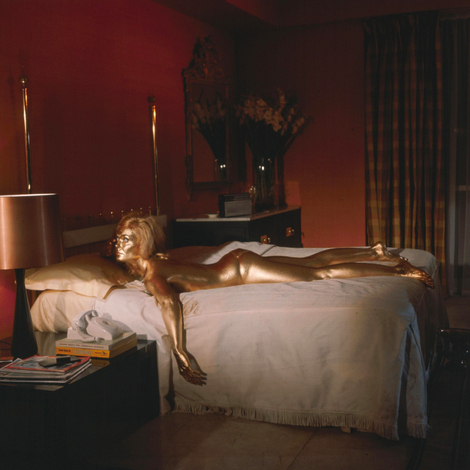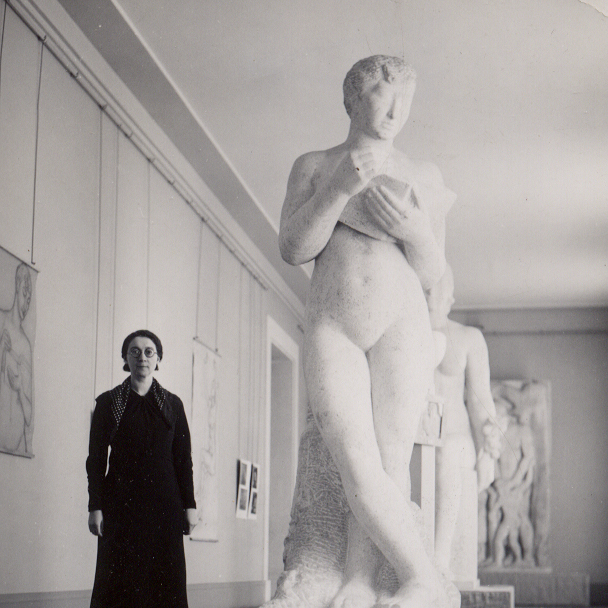It was the most incendiary moment of French Resistance spy Rose Valland’s life: the summer day in 1943 when she watched the Nazis knife, stomp on, and burn around 500 paintings by the likes of Pablo Picasso, Salvador Dalí, Max Ernst, and André Masson in the courtyard of the Jeu de Paume, in Paris. From the large ground-floor windows and glass doors of the museum, Valland tried to hide her abject horror. Over and over, she would see a flash of a painting and then watch it melt away, the frames and canvases crackling and snapping under the flames as a column of smoke billowed into the sky.
Valland, the subject of my new book, The Art Spy, was a curator with the Musées Nationaux before joining the French Resistance, working undercover inside the Nazis’ Paris-looting headquarters, the Einsatzstab Reichsleiter Rosenberg (E.R.R.), led by Alfred Rosenberg and Hermann Göring. At great risk to her life, she documented the Nazis’ large-scale plunder in detail, surreptitiously stole important documents, and sabotaged their work.

The intelligence she passed on to the Resistance enabled the Allies to locate hundreds of thousands of stolen artworks in Germany and Austria. Valland became one of the most medaled women of W.W. II and spent the rest of her life restituting looted artwork to their rightful owners—predominantly Jewish art collectors—yet she died in obscurity.

Valland never stopped holding the war’s perpetrators to account, including the Nazis responsible for the fiery destruction of so much modern art, which made her a very inconvenient witness. Following the publication of her wartime memoir, the Nazis she accused of burning the precious artworks used a common defense: deny and deflect. First, they told the German newspaper Das Schönste that Valland’s account was full of “fantasy-filled constructs” and what she saw burned were just “completely worthless things” like frames and packing boxes. They also spread the false rumor that Valland had been complicit in the wartime purgings, asserting that she had handwritten the word Vernichtet (destroyed) in various places in the E.R.R.’s art inventory.
One of the female German art historians who worked for the E.R.R. in the Jeu de Paume wrote to Valland in response, “I assure you that this opinion is not mine. First of all, I know your handwriting.… Finally, because in my memories, nothing associates you with this destruction by fire of the so-called ‘degenerate’ works of art.” Yet doubt about Valland’s account of the fire followed her for the rest of her life.

Valland would be appalled today to learn that the Nazis’ smear campaign against her succeeded. As her biographer, I knew I would have to address this issue. To include the art-burning incident in the book, the way Valland said it went, I would need a smoking gun—definitive proof it took place.

One morning, a little over two years into my research, I was making notes on the nearly 10,000 pages of documents I had photographed from the French Diplomatic Archives, which contained all the papers Valland left behind when she died. Tucked in the back of one of the boxes was a series of handwritten, notarized documents. I recognized who had signed them: the French guards who worked in the Jeu de Paume during the war.
I showed the documents to my French husband when he woke up. “Are these what I think they are?,” I asked excitedly. Indeed, they were the signed testimonials of the events surrounding the fire at the Jeu de Paume over those two fateful days in July 1943.

One guard described the Germans knifing and kicking the canvases with “unbridled satisfaction.” Another wrote forcefully, “In my soul and conscience I declare and affirm to have witnessed the destruction of a large number of torn paintings burned in the gardens of the Jeu de Paume one afternoon in the summer of 1943.” The Germans had ordered another French guard to set the paintings on fire. I also found a report about the burning of the paintings written by the head of security at the Louvre the day it took place, and a small article in the Resistance newspaper Libération titled “Flambez Peintures!” from September 7, 1943.
With modern art and architecture under attack once again, the veracity of such a shocking destruction of art is a timely discovery. It also finally validates the account of one of World War II’s bravest female heroes.
Michelle Young is a journalist and the author of Secret Brooklyn: An Unusual Guide, Secret New York: An Unusual Guide, Secret New York: Hidden Bars and Restaurants, and Broadway. She also founded the online magazine Untapped New York and teaches architecture at Columbia University

